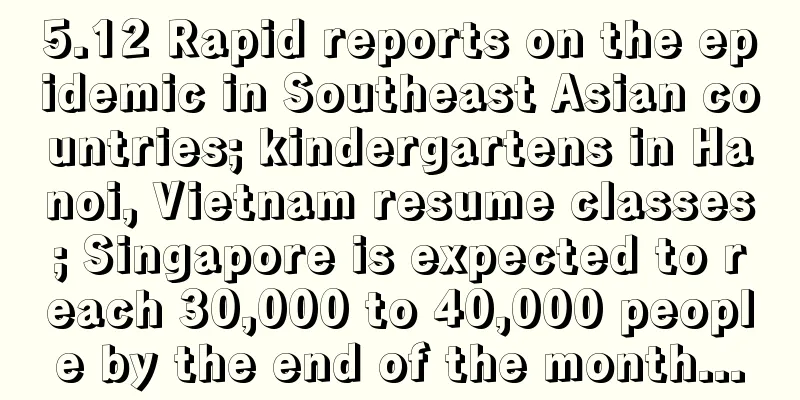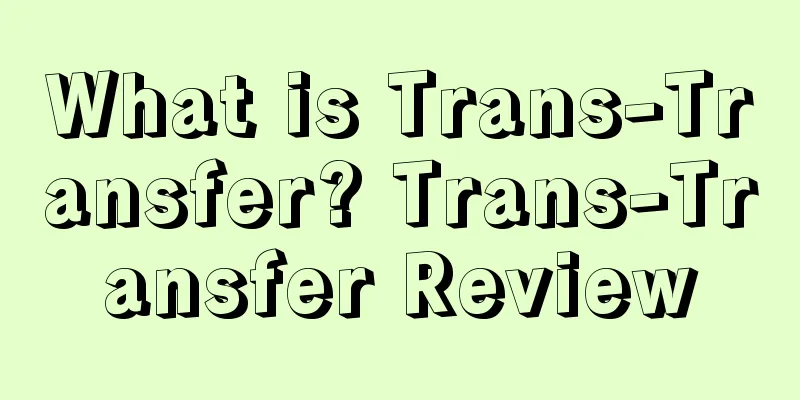What is Tri-State Express? Tri-State Express Review

Shenzhen Qianhai Santai Modern Logistics Co., Ltd. (abbreviated as Santai Express) is a wholly-owned subsidiary of Santai E-Commerce Co., Ltd. ("SFC Holdings CO., Ltd"), and was established in 2007. We have been committed to providing fast, efficient, safe and stable global logistics solutions for cross-border e-commerce sellers. Since its establishment, the company has 1,500 employees, with its headquarters in Shenzhen, Guangdong Province, and branches in Guangzhou, Shanghai, Hangzhou and Yiwu. Santai Express is based on software technology, with cross-border e-commerce parcels as its main business, focusing on meeting the logistics needs of cross-border sellers, and striving to provide cross-border e-commerce companies with high-quality logistics resources and intelligent warehousing services. Industry Logistics Headquarters Shenzhen Established in 2007 Website http://www.sfcservice.com/Introduction to Tri-State ExpressThe company is headquartered in Shenzhen, China, and has branches in Guangzhou, Hangzhou, Shanghai, Yiwu, Hong Kong, India, etc. At the same time, it has established good strategic partnerships with major platforms such as Amazon, Aliexpress, eBay, Linio, Paytm, Payoneer, PayPal, WorldFirst, etc. Advantages of Three-State Express ServiceIn order to meet the diverse needs of Chinese cross-border sellers and adapt to the development trend of the logistics era, Three State Express has integrated the best logistics resources from various countries to customize personalized service solutions for sellers. As of the beginning of 2019, Three State Express has launched a variety of international dedicated lines with unique three-state characteristics, FBA first-leg and postal parcels covering major sites around the world, and international express logistics service products in cooperation with many internationally renowned express companies. The average daily number of parcels shipped can reach 470,000 pieces, providing one-stop solutions for domestic warehousing, overseas warehouses and third-party cross-border logistics for more than 70,000 cross-border e-commerce customers. Efficient and stable logistics services have always been the unchanging purpose and pursuit of SanTang. Currently, SanTang has sufficient and fixed air space, clear and accurate transportation track tracking, comprehensive safety control, efficient daily operations, and advanced equipment reference, etc. In addition, SanTang is also equipped with one-stop warehousing services, intelligent inventory management, high accuracy, no-dead-angle security monitoring, and personalized security inspection items. Santai will continue to work hard to build a more comprehensive business, provide efficient and worry-free global logistics services to Chinese cross-border sellers, and help Chinese manufacturing go global. Introduction of Tri-State Express Service1. Tri-state dedicated line Latin America: Mexico Line, Brazil Line Europe: Global Express General Cargo Special Offer, China-Europe UK Line, UK Special Line Light Package, France Special Line, Germany Special Line, Italy Special Line, Spain Special Line, China-Europe Netherlands Special Line Australia: Australia special offer, Australia special line America and Canada: American Express (general cargo), Canadian Express Middle East: Middle East special line, Israel special line Asia: Vietnam special line, South Korea special line 2. Express Mail Parcel Europe: Express European registered mail, Express UK surface mail, Express 2nd level parcel, Express 3rd level parcel, Express France parcel, Express Spain parcel, Express Italy parcel, Express Germany parcel 3. Economic Packet Global: Southeast Postal Parcel, Swiss Postal Parcel, South China Postal Parcel, China Postal Parcel 4. FBA Service Mexico FBA, UK self-taxed FBA with charging, Australia FBA, US FBA with tax, India FBA, Middle East FBA, Canada FBA general goods, Canada FBA with charging, Japan FBA 5. International Express Three-state economic express, Hong Kong DHL small cargo special, Hong Kong DHL, China UPS Three-State Express Business ProcessAdvantages of Tri-State Express1. Wide delivery range Cooperating with many well-known express companies, we provide efficient transportation services to more than 200 countries and regions around the world. 2. Strong customs clearance capabilities We cooperate with customs clearance companies in various countries and have various forms of export customs clearance methods to quickly solve customs clearance problems. 3. Fast transportation Fully automatic intelligent equipment handles more than 470,000 international parcels per day, with an error rate of less than one in ten thousand. 4. Safe and reliable Several branches are nearby to collect goods: Shenzhen, Guangzhou, Shanghai, Yiwu, Hangzhou, to provide you with A-scan's perfect tracking service that goes online as soon as it leaves the warehouse. Development History of Tri-State ExpressIn 2001, the founder started a software development business in Canada - software technology is in Tristate's genes. 2003, started e-commerce business - Toronto, Canada. In 2006, the headquarters was gradually moved to Shenzhen, China. In 2009, we started to develop China's export cross-border logistics business. In 2012, SanTai shipped more than 100 million e-commerce orders from China to consumers around the world. In 2015, we started to develop China's import cross-border e-commerce logistics business. In 2016, we started business in India. In 2017, Yiwu subsidiary was established. In 2018, Xi'an subsidiary was established. Three-State HonorNational High-tech Enterprise Nominated for China's Best Employer of the Year for many consecutive years Won the title of Top 10 Cross-border E-commerce Logistics Enterprises in Guangdong Province for many consecutive years Top 10 most popular companies in Guangdong Province's cross-border e-commerce industry "Huaxin Award" Most Promising Listed Company "Huaxin Award" Most Valuable Enterprise Guangdong Province Cross-border E-commerce Pilot Enterprise Three-state corporate cultureCorporate mission: To promote global trade through technology and innovation Corporate Vision: To become the world's most trusted cross-border e-commerce company Corporate values: customer-centric, value creator-oriented, long-term adherence to improving operational efficiency Three States Express Terms of Service(Effective date: October 23, 2014) (If there are any updates to the terms of service, they will be pushed to the sender for confirmation through the system. All terms are subject to the latest effective content.) These Terms of Service are concluded on the date the shipper signs them, and the transportation of all shipments will be subject to the provisions on liability limitation in these terms. The service provider in these Terms of Service refers to the service provider (including branches) and partners. 1. Account review and authentication The sender must provide authentic and valid authentication information and payment account number that match the account user for account authentication. After authentication, the service provider logistics platform can be used by the sender. All information on the service provider platform is only the responsibility of the registrant. 2. Shipment delivery 2.1 Restricted and Prohibited Shipments The sender has clearly understood that the service provider does not accept the sender's entrustment to transport counterfeit goods and goods that are clearly prohibited by the National Customs Law, and agrees that all goods delivered by the sender meet the transportation conditions. If the sender violates the relevant regulations, all consequences arising from the violation shall be borne by the sender. 1) Prohibited items: 1. Items protected by customs intellectual property rights (such as world-famous brands, which can be accepted with a "formal authorization letter"), counterfeit and shoddy goods; 2. Various weapons and ammunition, simulated weapons (such as simulated toy guns), toxic chemicals, dangerous chemicals, explosives (fireworks, gas lighters, gasoline, alcohol, sulfuric acid, paint, etc.), firearms, white crystals, powders, liquids, pastes, etc.; 3. Cash, checks, bills of exchange, securities, bearer negotiable instruments, counterfeit currency, debit cards, credit cards and other cards, and bankbooks of financial institutions, etc.; 4. Drugs (such as opium, morphine, heroin, marijuana, methamphetamine, etc.), medicines, narcotics, psychotropic drugs, etc.; 5. All kinds of obscene books, newspapers, pictures, films, videotapes, audiotapes, obscene toys, entertainment products, and daily necessities printed or engraved with obscene words and patterns, etc.; 6. Animals, plants, animal carcasses (such as specimens), human bodies, and other harmful organisms; 7. Tobacco, wine, sugar, mahogany, seeds (other propagation materials), cosmetics, food, etc.; 8. Medical waste, chemical waste, industrial waste and strong poisons (such as thallium, cyanide, etc.); 9. Precious cultural relics and antiques, audio-visual products (CDs, tapes, videotapes, etc.), precious metal products such as gold, silver, platinum, gemstones, jewelry, pearls, ivory, animal skins, furs (fur), private or official seals, etc.; 10. Spray containers, asbestos, butane lighters, magnetic items exceeding the standards, oxides and organic peroxides, etc.; 11. Items whose import or export is prohibited or restricted by the laws of the importing or exporting countries, including the transit countries; 12. Other items that are not allowed to be carried in the transportation agreement of the airline or transportation company; 13. Other items that the Service Provider deems not to be in compliance with the regulations. 2) Restricted items: 1. Some transportation channels restrict the transportation of battery products (please refer to the "Battery Transportation Guide" for details); 2. Some transportation channels restrict the transportation of wooden box packaging (for details, please refer to "International Express Export Wooden Box Packaging Requirements"); 3. Hong Kong Post Small Packet Flat Mail restricts the transportation of metal products; 4. China DHL restricts the transportation of wigs; 5. Taiwan DHL restricts the transportation of car players; 6. The Chinese federal government restricts the transportation of LED items with brand logos, products with CE, UL, ROHS, RU, FCC and other certification logos printed on the products themselves or on the packaging, circuit boards, books, and auto parts. 2.2 Handover of Shipment Information Before handing over the shipment to the service provider, the sender must complete the following: 2.2.1 System data upload 1) The name, specification, quantity, declared price and insurance service of the goods entrusted to the service provider must be truthfully registered and uploaded to the logistics platform, and the label and delivery list must be printed through the logistics platform; 2) The sender must ensure the authenticity and completeness of the information filled in; 3) The service provider has no obligation to review the qualifications of the person filling out the waybill and other documents and whether they are authorized by the sender, nor is it obliged to review whether the filled-in content is consistent with the shipment. The sender is responsible for the filled-in content; 4) The service provider will deliver the parcel according to the information provided by the sender; 5) Before exporting the goods, the sender must understand the information required for customs clearance in the destination country and obtain various licenses and other government approvals required for export. The service provider is not responsible for providing relevant information and is not responsible for any consequences caused by incomplete information; 6) Unless otherwise specified, the information uploaded by the sender will be used as customs clearance information. If the sender provides false information, resulting in transportation delays, customs detention, fines and other consequences, the sender shall bear all economic losses and legal liabilities. The service provider does not assume any responsibility and reserves the right to pursue legal liability from the sender. 2.2.2 Delivery List When the sender submits the shipment to the consignee designated by the service provider, he/she shall also provide the "delivery list" that matches the shipment as required. After confirmation, both parties shall sign the "delivery list" as proof of completion of the delivery. 2.2.3 Domestic Express Delivery Note When the sender sends goods to the service provider via domestic express, the sender should log in to the logistics system at the same time to add the information of the goods to be sent. If the sender fails to comply with the requirements and the service provider is unable to identify the sender's information, the service provider will provide a 1-month storage period. The sender must actively contact the service provider within the storage period. Failure to do so will be deemed as abandonment of the goods and the goods will be destroyed. 2.2.4 Cargo handling The shipments that the sender hands over to the service provider should be processed according to the requirements. In particular, for valuable, fragile, and easily damaged shipments, they must be packed intact before shipment to ensure that they are suitable for handling under normal circumstances. Handover documents and complete customs clearance documents must be provided with the shipments if necessary. 2.3 Shipment Inspection The service provider has the right to randomly open and inspect the shipment without notifying the sender in advance. If infringing items are found, the service provider will handle the situation as follows: Inspection fee is charged at the rate of RMB 100 per shipment; The service provider will not be held responsible for any delays or other problems caused by increased inspection of the sender's shipment. Fees and settlement methods 3.1 Fees 1) Shipping costs The shipping cost is the total shipping cost actually incurred by the sender under the user account registered on the service provider's website. The service provider has the right to adjust the shipping price according to market conditions. The sender will be notified of the price adjustment by email. 2) Insurance premium Compensation for all shipments will be based on the relevant compensation terms of the freight method selected by the sender. If the sender requires greater protection, they may choose to purchase commercial insurance on the service provider's logistics platform. * Due to the special nature of international surface mail services, insurance is not accepted; * International registered mail senders can choose whether to purchase insurance, but if the declared value (which must be declared according to the retail price) exceeds US$25, insurance must be purchased; * In order to ensure the processing time, special line and express delivery services must purchase insurance; * The insurance premium is collected by the service provider. Once an accident occurs, the service provider will file a claim with the insurance company on your behalf. The sender must provide the required information for the claim as required. If the sender is unable to provide the claim information and compensation is not paid, the sender shall bear the responsibility. 3) Return Fee In case of return due to unsuccessful delivery or refusal of shipment by the consignee, the service provider will charge return fees according to the charging standards of the freight method selected by the sender, including the warehouse rental fees, customs clearance fees, etc. that have been incurred due to the return. 4) Other expenses The service provider's quotation is only for freight and fuel surcharges, and does not include customs clearance fees at the destination, warehouse rental fees due to customs clearance delays, and other taxes or fines levied by the destination country. The service provider will charge the sender for all such fees not caused by the service provider. Since such fees may not be known before shipment, the final fee amount shall be subject to the bill of the superior carrier. 3.2 Settlement In the absence of other agreements, the settlement cycle and method accepted by the service provider is prepayment, that is, the sender pays the service provider in advance. The service provider can issue an invoice to the sender. The invoice header information must be consistent with the sender's registered information. The invoice is issued once a month. The sender should provide the service provider with relevant materials for filing and pay 6% VAT. Delivery and non-delivery 4.1 Delivery 1) The service provider ensures that the sender's shipment is delivered to the upstream carrier in a timely, accurate and safe manner; 2) The sender must ensure the accuracy and completeness of the recipient information provided. Shipments cannot be delivered according to postal codes or email addresses, but only according to the detailed recipient address; 3) The first recipient of mail in postal delivery should be considered the consignee, but it does not necessarily mean that it is delivered directly to the recipient himself; 4) If there is a centralized receiving point at the recipient's address, the shipment will be delivered to that receiving point. 4.2 Reasons for non-delivery The following situations may result in the shipment being unable to be delivered: 1) The recipient refuses to accept the shipment or pay taxes; 2) The shipment is deemed unacceptable by the relevant authorities of the transit country or destination country; 3) The customs believes that the sender's customs clearance information does not match the actual shipment (the sender of the customs clearance invoice issued by the shipment is the service provider. If the customs requires the sender to provide customs clearance information stamped by the real sender, the sender must cooperate with the customs to handle it); 4) The recipient cannot be determined or found. 4.3 Notification of non-delivery The service provider ensures that any abnormal situations that occur during the transportation of the shipment that have been learned of are promptly fed back to the sender and actively coordinated to handle the situation. 1) For abnormal situations caused by a single shipment, the service provider will notify the sender in the form of a problem item in the logistics system. The sender should ensure that the problem item is checked in a timely manner and actively cooperate with the service provider to handle it; 2) For common, wide-ranging or industry-related abnormal situations, the service provider will publish them in the form of emails and website news. The sender should ensure that the email address provided is valid and regularly check the content of emails and service provider official website news. If there is any change in the email address or contact information, the service provider should be notified in a timely manner; 3) If the sender fails to provide timely advice or the destination government cannot accept the sender's advice, the service provider may have the right to abandon the shipment without any liability to the sender or others. 5. Re-issuance or return of shipment 5.1 Shipment Rerouting 1) If the sender chooses to use Hong Kong Surface Mail to send the shipment, when the posting address belongs to the Hong Kong Surface Mail tail bag situation, the service provider has the right to transfer the sender's shipment to other postal parcel surface mail services. The freight remains the same as the initial billing amount. (Hong Kong Post Tail Bag: Hong Kong Post stipulates that the shipments must be sorted and bagged according to countries and regions. The weight of each bag of shipment must not be less than 6 kg and not more than 10 kg, otherwise it will not be accepted. Shipments that cannot be sent on the same day because the weight is less than 6 kg are tail bag shipments) 2) For shipments returned to the service provider's UK processing center, the sender may choose to resend the shipment. In addition to the shipping fee for resending to the new address, the sender must also bear a resending fee of 50/ticket. 5.2 Returned Goods Processing If the shipment entrusted by the sender to the service provider for transportation encounters one of the "4.1 Reasons for Non-delivery" and is eventually returned to the domestic service provider's operation center: 1) The service provider does not promise the time of return of the goods. The specific time of notification from the service provider shall prevail. 2) The service provider can provide 7 days of free storage service for the returned goods that are detained by the sender for any reason. Within 7 days, the service provider will consult the sender on the return method of the logistics system. If it exceeds 7 days, the service provider will destroy the returned goods; 3) The service provider will handle the shipment in a reasonable manner according to the sender's requirements, and the sender shall bear the additional costs incurred: The sender may choose to have the service provider destroy the returned goods. The destruction fee is 1 yuan/kg. If the relevant fees actually incurred for the return of the goods have been paid by the sender to the service provider. 6. Shipping Delays 6.1 Force Majeure The Service Provider shall not be liable for any loss or damage caused by any reason beyond the control of the Carrier, including but not limited to: * Natural disasters, such as earthquakes, tornadoes, storms, floods, fog, etc.; * Force majeure such as war, air crash or embargo; * Inherent defects or characteristics of the shipment (whether or not known to the Service Provider); * The upper-level carrier’s inability to handle shipments in unexpected situations, such as warehouse overflow during peak season; * riot or civil commotion; * The actions or omissions of persons who are not employees of the Service Provider or do not have a contractual relationship with the Service Provider, such as the sender, consignee, third party, customs or other government agencies; * Labor-capital incidents; * Electromagnetic damage or deletion of electronic audio, video, images, data or records. 6.2 Lines The sender must accept all routes and detours arranged by the service provider and the upstream carrier, including possible transportation transfer stations. The service provider will not make any commitment to the transportation time resulting from this. 6.3 Reference Time The delivery time published on the service provider's website is the time from the time the operation record is recorded on the corresponding query website to the arrival of the shipment, but does not include the time when the service provider picks up the shipment, the time when the shipment is sorted at the sorting center, and the time for customs clearance. The service provided by the service provider to the sender is not a scheduled or time-limited service. The transportation time limit of the freight method published on the service provider's official website is only used as a reference and is not used as a basis for compensation for shipment delays. 7. Query 7.1 Data Query The service provider's logistics system should retain information such as the quantity and amount of goods shipped by the sender for one month. If the sender needs to retain the data, he should use the service provider's logistics system tool to export the table and save it for himself. 7.2 Shipment Tracking 1) Freight modes classified as international surface mail parcels on the service provider's official website are not within the scope of inquiry or claims; inquiry services for other modes of transportation are subject to the announcement on the service provider's website; 2) If a shipment that the service provider has delivered to the upper-level logistics carrier is damaged or lost, the service provider will assist the sender in making inquiries or claims and handle the matter in accordance with the compensation processing rules of the upper-level logistics carrier. Shipments that have been insured will be handled in accordance with the insurance claim rules; 3) If any of the following situations occurs for the freight method that the superior carrier can query, the sender may submit a query application to the service provider: * The shipment does not display online tracking information according to the normal processing time; * The shipment is not delivered successfully beyond the reference time limit of the selected transportation method; * The shipment is shown as delivered successfully on the query website corresponding to the selected freight method, but the recipient reports that he has not received the shipment; * The recipient reports that the shipment is damaged, reduced, or inconsistent with the shipment that was sent out; * Incurring unknown expenses; 4) Shipments that the sender requires to be queried or claimed should be submitted within the queriment or claim period of the transport mode. The service provider will not accept queriments or claims beyond the period. The specific requirements are subject to the official website of the service provider. 5) The sender should ensure that the shipment information is detailed and accurate when sending the shipment, and provide relevant information for querying the shipment when querying. If the carrier refuses to query because the information when the shipment is sent is inconsistent with the information when the query is submitted, or the shipment information submitted by the sender does not meet the query conditions, all losses and responsibilities shall be borne by the sender. Due to the time, space and transit link restrictions on international transport shipment query, the query period varies in different countries and different modes of transportation. The service provider will do its best to query the shipment for the sender, but will not be responsible for the delayed response of the upper-level carrier. 8. Claims 8.1 Acceptance conditions Any claims must be made after the service provider's inquiry period for each shipping method has ended. The sender needs to provide relevant proof of the lost, damaged or wrong shipment, such as the recipient's instructions, photos, etc. 8.2 Compensation 8.2.1 The total number and total weight of the parcels actually received by the Service Provider do not match the delivery list provided by the Sender: 1) The quantity of the shipment does not match: After the service provider checks the shipment delivered by the sender with the delivery list, if it finds that the quantity of the shipment is different from the quantity indicated on the delivery list, it will create a problem shipment through the system, or ask the sender to confirm by email or phone before forwarding the shipment to the upstream carrier. 2) Difference in shipment weight: * International Surface Mail and Registered Mail Weight Difference When the weight difference is within 100 grams, the service provider will not notify the sender, and the actual delivery data of the service provider will prevail; if the weight difference is more than 100 grams, the service provider will notify the sender by phone and ask for confirmation before transferring the shipment to the upper-level carrier. (For international surface mail shipments where the sender has not uploaded the shipment information to the logistics system, the actual delivery weight of the service provider will prevail and no notification will be given.) * Weight difference between special line and express delivery services If the weight difference is within 500 grams, the service provider will not notify the sender, and the actual delivery data of the service provider will prevail. If the weight difference is more than 500 grams, the service provider will notify the sender by phone and ask the sender to confirm before transferring the shipment to the upper-level carrier. In case of discrepancies in quantity or weight, the service provider is only obliged to provide feedback and is not liable for compensation for losses caused by the discrepancies. 8.2.2 Lost Shipment: 1) Loss within the service provider: If the shipment is lost from the time the sender hands the shipment to the service provider staff for confirmation and signature until the service provider hands the shipment to the upper-level carrier, the service provider will bear the liability for compensation. The amount of liability is based on the declared value entered by the sender in the service provider system (which must be declared according to the retail price) or the actual value of the product (i.e. the purchase receipt and invoice provided by the sender), whichever is lower. The maximum compensation amount for a single shipment does not exceed US$100. 2) Loss caused by the superior carrier’s mistake: After the service provider hands over the shipment to the superior carrier, the superior carrier will provide relevant handover certificates. If the shipment is lost, the superior carrier will be responsible for compensation. The service provider will assist the sender in making a claim to the superior carrier, and the claim amount will be implemented according to the compensation regulations of each freight method. 3) Loss of shipments due to customs spot checks: The Service Provider shall not be liable for any losses caused by the loss of shipments, loss of some items in the shipment, or seizure by customs due to unpacking and inspection during customs clearance. 4) Terms for handling fake goods, counterfeit goods, prohibited goods, restricted goods, etc.: The sender has clearly understood that the service provider will not transport cash, flammable, explosive, fragile items, items that infringe copyrights and intellectual property rights, illegal items, and prohibited items stipulated by airlines and laws. The service provider will not bear any liability for compensation for any losses caused by the sender's violation of the above-mentioned prohibited shipping regulations, and reserves the right to pursue legal liability against the sender. 8.2.3 Wrong shipment: If the recipient finds damage or substitution after receiving the shipment, the sender should promptly ask the recipient to provide photographic proof and bill of lading number proof to the service provider. 1) If the substitution is not caused by the service provider, the service provider will assist the sender in making a claim to the superior carrier. The compensation amount will be paid based on the declared value of the product (which must be declared according to the retail price) and the compensation rules published on the service provider's official website; > 2) If the shipment is sent to the wrong address due to the service provider's operation, the service provider will choose the lowest cost method among the following methods to handle it: * Return the mailing or courier fees collected to the sender, and compensate for the lower of the value of the item and the declared value (which must be declared according to the retail price) ; * Bear the postage of returning the goods from abroad to Shenzhen; * Surface mail postage for forwarding a shipment from a wrong address to the correct address. 8.3 Other losses 1) The service provider's liability to the sender is limited to direct losses and shall not exceed the limits published for each mode of transport; 2) As the shipper may insure against special risks in advance, the service provider shall not be liable for any other losses or damages (including but not limited to loss of profits, income, interest and future business), whether such other losses or damages are special or indirect, and whether the service provider is aware of the risk of such losses or damages before or after accepting the shipment; 3) The service provider shall not bear any responsibility for any disputes arising from the brand or quality of the goods entrusted by the sender for carriage. 9. Confidential Information 1) The service provider promises to ensure that the account information provided by the sender is properly kept and will not be used for any other purpose except account authentication; 2) The sender must keep confidential the sensitive information in the services provided by the service provider, including the agreed rates, financial status, technical information, etc. 3) The sender must ensure the security of the account and password registered in the service provider's logistics system. The service provider will not be held responsible for any economic or other losses caused by the sender's poor custody of the account or the tampering of the account information. 10. Applicable Law and Dispute Resolution If the sender has any dispute over the content of the terms or their execution, the parties shall try to resolve it through friendly negotiation; if the negotiation fails, either party may file a lawsuit in the People's Court where the service provider is located. 11. Severability The invalidity or unenforceability of any part of these Terms and Conditions shall not affect the validity and enforceability of the other provisions. |
<<: What is Find Your Influence? Find Your Influence Review
>>: What is SGshop? SGshop Review
Recommend
When a product is out of stock, it suddenly changes to another product. What is the reason? What should I do?
After a product is out of stock, it suddenly beco...
When doing business on Amazon, be careful to avoid these traps
For Amazon sellers who have not encountered setbac...
What is BigBasket? BigBasket Review
BigBasket is India's largest grocery e-commerc...
Walmart partners with ROBLOX to find young buyers in the virtual world!
<span data-docs-delta="[[20,"获悉,沃尔玛正以两种体验(...
What is Listing Eagle? Listing Eagle Review
Listing Eagle is a tool that monitors sellers’ lis...
Directly affects product conversion! Amazon page updates Feedback again
text Recently, everyone has discovered that Amazon...
65 cargo ships are waiting to dock and unload! 23 are about to arrive! Major ports in the United States are seriously congested!
<span data-shimo-docs="[[20,"获悉,据外媒报道,9月16...
Amazon Listing Optimization Product Q&A
1. What is Q&A Q&A, or Customer Questions ...
How does Amazon detect fake orders? What are the types of fake orders?
From the seller's point of view, the benefit ...
No one confessed on 520? AMZ123 will continue to pamper fans!
The editor observed the stars last night and found...
How much does it cost to start a store on your own in 2024? Compared with the initial store preparation, product selection is actually the most challenging project...
Red wine black tea My C position Going it alone sh...
What is Glocash independent station payment? Glocash independent station payment review
Glocash——A secure, convenient, and global online p...
100,000 units sold! Domestic "hair styling magic tool" recalled by CPSC!
It is learned that according to foreign media rep...
What is FBA Donations? Review of FBA Donations
On August 14, 2019, Amazon launched an FBA Donatio...
The rise of social commerce: How Instagram is leading the way
It is learned that as social networks have become ...









